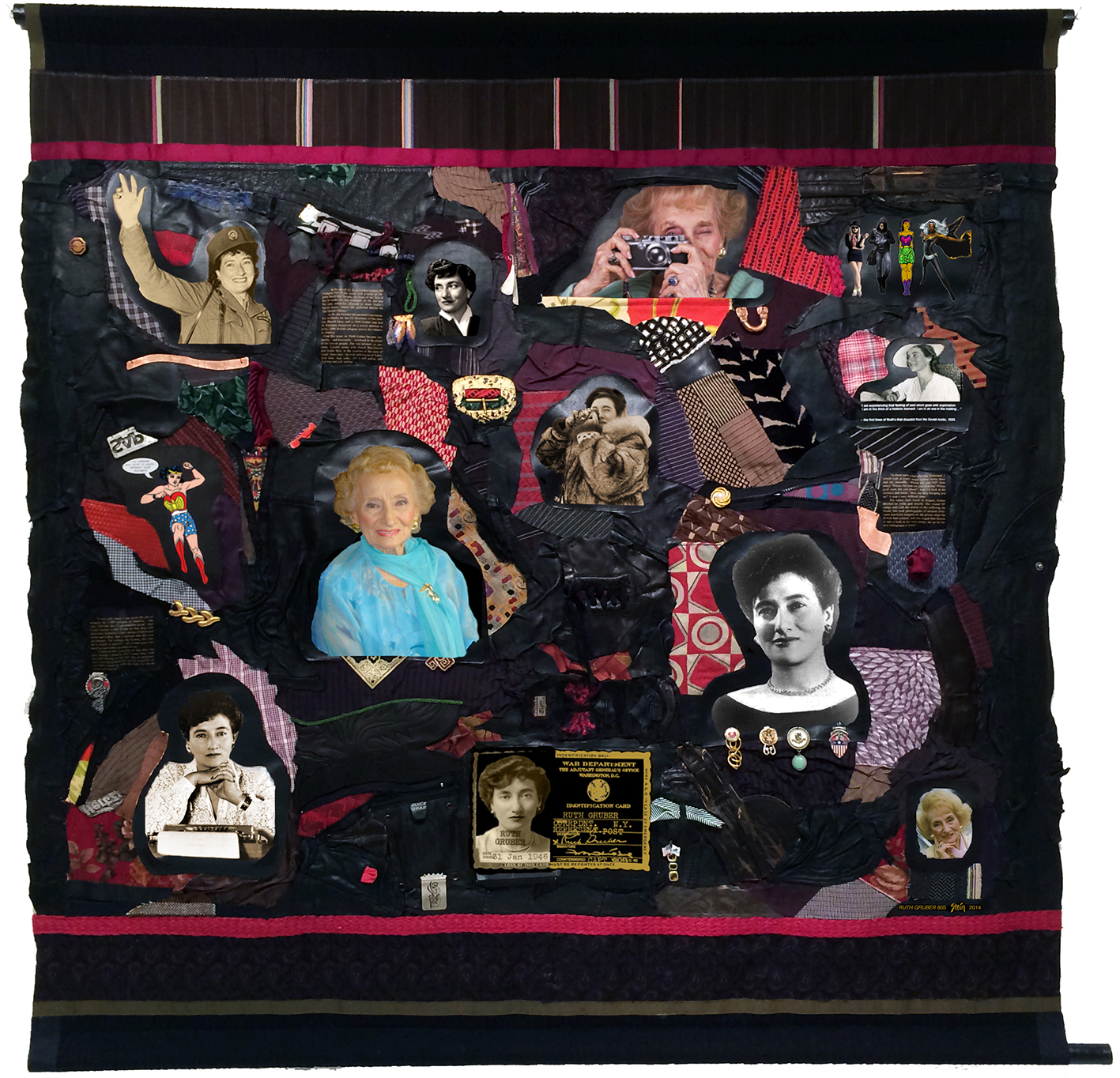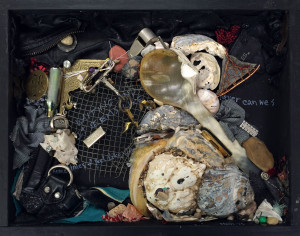
Find Cards is a differential learning and assessment strategy that Keifer-Boyd (2014, 2013) developed in the 1970s for teaching mixed age groups from five-year-olds to elders in art galleries. When participants create Find Cards, facilitators discern what learners find important. Also, in composing a question, reflection on what is learned integrates assessment with learning.
FIND CARD ACTIVITY: Partner with another (someone you don’t know in the group). Spend 10-15 minutes together looking at the exhibition and writing a “Find Card.” When finished, place your card with the other cards. Select another card together and find a work that the card prompt directs attention. With your partner, discuss the question posed on the Find Card and other interpretations or knowledge you have about the work. A Find Card begins with a directive or clue of something to find in an exhibition and includes a question. For example:
FIND CARD EXAMPLES:
- Find an artwork that is about a civic action. What are the challenges of the civic action conveyed in the work?
- Find an artwork about power and vulnerability. How does the work convey these ideas and with what impact?
- Find a situation of diversity, difference, exclusion or inclusivity in one of the artworks. Can you relate to the situation? Have you ever felt pressure to exclude someone? What happened?
- Find an artwork that makes you feel angry. Why do you think it made you feel this way?
- Find an artwork that makes you feel empowered. Why does it make you feel this way? Do you think others would feel empowered by this too?
RESOURCES:
- Keifer-Boyd, K., & Kraft, M. L. (2014). IDEA<—>Empowerment through difference <—>Find Card strategies. In S. Malley (Ed.), 2013 VSA Intersections: Arts and Special Education Exemplary Programs and Approaches (pp. 147-158). Washington, DC: The John F. Kennedy Center for the Performing Arts.
- Kraft, M., & Keifer-Boyd, K. (2013). Including Difference: A communitarian approach to art education in the Least Restrictive Environment. Reston, VA: The National Art Education Association.
- Stein, L. (Ed.), 2016. Holocaust Heroes: Fierce Females—Tapestries and Sculpture by Linda Stein. Philadelphia, PA: Old City Publishing.
Voice recording of “Civic Engagement” Find Card Activity on July 12, 2016:
Download “H2F2 Civic Art Education: Taking the Challenge of Change” Find Card Activity


